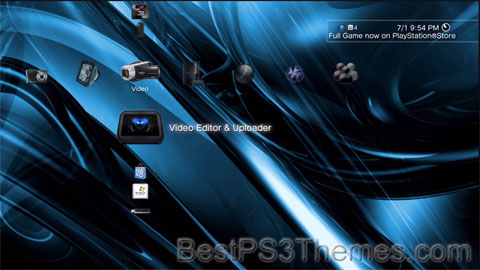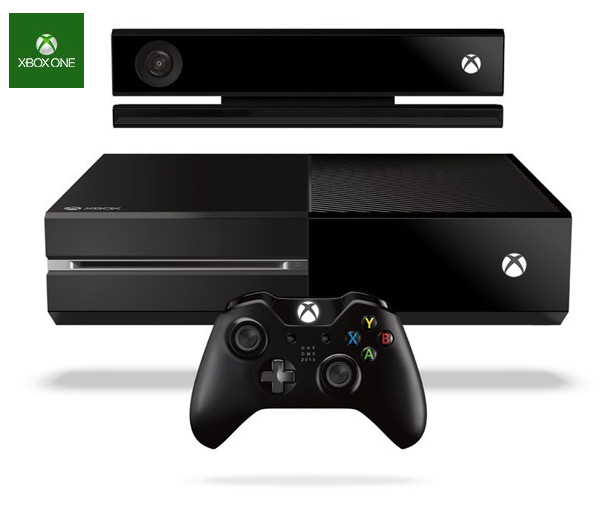Prey is a first-person sci-fi action game from Arkane Studios, the creators of multiple Game of the Year winners, Dishonored 2 (2016) and Dishonored (2012). In Prey, you awaken aboard Talos I, a space station orbiting the moon in the year 2032. You are the key subjec of an experiment meant to alter humanity forever – but things have gone terribly wrong. The space station has been overrun by hostile aliens and you are now being hunted. As you dig into the dark secrets of Talos I and your own past, you must survive using the tools found on the station–your wits, weapons, and mind-bending abilities. The fate of the Talos I and everyone aboard is in your hands.
Marvel’s Guardians of the Galaxy: The Telltale Series – PS4
Marvel’s Guardians of the Galaxy: The Telltale Series delivers a brand new story of the universe’s unlikeliest heroes, the rag-tag band of outlaws who go by the names Star-Lord, Gamora, Drax, Rocket, and Groot. In the wake of an epic battle, the Guardians discover an artifact of unspeakable power. Each of the Guardians has a reason to desire this relic, as does a ruthless enemy who is the last of her kind, and who will stop at nothing to tear it from their hands. From Earth to the Milano to Knowhere and beyond, and set to the beat of awesome music, this five-part episodic series puts you in the rocket-powered boots of Star-Lord in an original Guardians adventure, told in the unique and award-winning Telltale style, where your decisions and actions will drive the path of the story you experience. The Season Pass Disc includes episode one of the series, and grants access to download the remaining four episodes as they become available.
Full Details on Marvel’s Guardians of the Galaxy: The Telltale Series
Call of Duty: Black Ops III PlayStation 3, 4 (PS3/PS4) – Available November 6, 2015
Amazon Prime Now service will offer special delivery windows for Prime members wanting to get Activision’s Call of Duty: Black Ops III delivered just as it becomes available at midnight eastern standard time on the game’s release night – Friday, November 6.
Release night pre-orders must be placed using the Prime Now app with reservations starting at midnight eastern standard time on November 4. Customers will be able to choose a special delivery window, select additional items they might need for their late night mission — such as beverages, snacks or extra gaming controllers — and pre-order the game for late night delivery on its release night, Nov. 6. There is limited availability within each delivery window so customers are urged to download the Prime Now app and be ready to reserve their delivery on Nov. 4 at midnight eastern when pre-orders begin in the app.
Prime Now is currently offered in Atlanta, Austin, Baltimore, Chicago, Dallas, Houston, Indianapolis, Las Vegas, Los Angeles, Manhattan, Miami, Minneapolis, Orange County, Phoenix, Portland, Sacramento, San Antonio, San Francisco, San Jose, and Seattle. For these special, late night Call of Duty: Black Ops III two-hour delivery windows, there will be no delivery fees.
2013 E3 Games – See them on Amazon
XBOX ONE – Pre-Order Available Now!
Xbox One – Day One Console includes a limited edition controller, token code to unlock Day One achievement, premium packaging, and decal.
Kinect is included with every Xbox One. Completely reengineered to be more precise, responsive and intuitive with unparalleled voice, vision and motion technology
The console is driven by a powerful combination of CPU, GPU and 8GB of RAM, governed by an innovative OS architecture, to deliver power, speed and agility
Only Xbox One unleashes the vast and scalable power of the cloud for your games, entertainment and apps with Xbox Live
With Xbox One, you can quickly jump from TV to movies to music to a game
Xbox One delivers an entertainment experience like nothing before. Its innovative technology is rivaled only by its iconic design. Sharp corners and clean lines make for a sleek, modern console that complements any decor. Xbox One was designed from the ground up to be the centerpiece of every living room.
Play with peak performance.
Xbox One is the perfect balance of power and performance. In addition to Xbox One’s revolutionary architecture, the combination of its CPU, GPU, and ESRAM is like having a supercomputer in your living room. But raw power is nothing without speed. So the Xbox One uses its power more effectively, creating lightning fast experiences unlike anything you’ve had before.
PlayStation 4 – Pre-Order Available Now!
PlayStation 4 redefines rich and immersive gameplay with powerful graphics and speed, intelligent personalization, deeply integrated social capabilities, and innovative second-screen features.
“Suspend mode” eliminates the load time on your saved game and allows you to immediately return to where you left off by pressing the power button.
Background downloading and updating capability also allows you to immediately play digital titles as they download, or update the system when the hardware is powered off.
PlayStation 4 lets you instantly share images and videos of your favorite gameplay moments on Facebook with a single press of the “share” button on the Dualshock 4 controller.
Broadcast while you play in real-time through Ustream, allowing friends to comment or jump into your game in new ways.
Games already announced for the PlayStation 4 include first party titles Killzone: Shadow Fall, inFamous Second Son, Driveclub and Knack as well as partner titles Destiny, Diablo III, Deep Down and Watch Dogs.
The Best Place to Play
Push the boundaries of play with PlayStation 4. Working with some of the most creative minds in the industry, Sony has developed a breathtaking gaming system that delivers unique gaming experiences.
Completely New Ways to Play
The DUALSHOCK 4 controller incorporates a new highly sensitive six-axis sensor, as well as a touch pad located on the top of the controller, which offers gamers completely new ways to play and interact with games.
The newly developed PlayStation Camera (sold separately) for PlayStation 4 incorporates two high-sensitive cameras that have wide-angle lenses with 85-degree diagonal angle views which can recognize the depth of space precisely.
Create magical moments that you will remember for the rest of your life with PlayStation 4.
Key Features
- DUALSHOCK 4 controller with touch pad, three-axis accelerometer and three-axis gyroscope, and rechargeable battery
- Two high-sensitive cameras with 85-degree diagonal angle views for enhanced depth perception
- Compatible with x86 architecture to make video game development easier on the next-generation console
- Controller connection via Bluetooth 2.1 + EDR
- 802.11 b/g/n wireless network connectivity, Ethernet, and USB ports
Main Processor:
Single-chip custom processor
CPU: x86-64 AMD ‘Jaguar’ 8 cores
GPU: 1.84 TFLOPS, AMD next-generation Radeon™ based graphics engine
Memory:
GDDR5 8GB
Hard Disk Drive:
Built-in
Optical Drive (read only):
BD 6xCAV
DVD 8xCAV
I/O and communication:
Super-Speed USB (USB 3.0)
AUX
Ethernet (10BASE-T, 100BASE-TX, 1000BASE-T)
IEEE 802.11 b/g/n
Bluetooth® 2.1 (EDR)
AV output:
HDMI
Analog-AV out
Digital Output (optical)
Amazon.com “Who’s Your Hero?” Sweepstakes
Tomb Raider: The Final Hours Edition Collector’s Edition
Tomb Raider Collector’s Edition Content:
– Copy of the game
– Play Arts Kai Lara Croft Figurine — Fully posable figurine with over 40 points of articulation.
The dirt on her body and clothes have been realistically recreated to tell the tale of Lara’s fierce fight for survival on a desolate island in her first and most harrowing adventure.
Comes with alternate set of three (3) hands, bow and arrow, shotgun, handgun, and climbing axe.
Figure Size: Approx 8.0″ Tall
– Endurance Survival Kit Packaging — Worn and weather-beaten steel tin recovered from the Endurance shipwreck.
15″ x 19″ Double Sided Island Map and Poster — Discover Key Landmarks from the mysterious island of Yamati, where Lara Croft and her fellow castaways were marooned after the Endurance shipwreck. On the reverse is a poster size image of the box art that epitomizes Lara’s origin story.
– Lithographic Print — 5″ x 7″ heavy stock lithograph print with matte frame, designed by Crystal Dynamic’s Senior Art Director, Brian Horton, painting by Brenoch Adams.
– Experience Shields — 3 Iron-on badges of the game’s key icons
Animal Instincts
Climbing Axe
Fire Arrow
– CD soundtrack — Tomb Raider Original Soundtrack ‘Survivalist cut’
A collection of 10 tracks totaling over 60 minutes of music from the game
– Downloadable Content — Weapons Pack
A selection of weapons to help Lara survive against the island’s inhabitants.
Ninja Ambush for iPhone/iPod Touch
Buy now on iTunes for $0.99 http://itunes.apple.com/us/app/ninja-ambush/id409671385?mt=8
REALiZTiK_3
REALiZTiK_3 theme by S_Y_N_1_S_T_3_R
Download: REALiZTiK_3.p3t

P3T Unpacker v0.12
Copyright (c) 2007. Anoop Menon
This program unpacks Playstation 3 Theme files (.p3t) so that you can touch-up an existing theme to your likings or use a certain wallpaper from it (as many themes have multiple). But remember, if you use content from another theme and release it, be sure to give credit!
Download for Windows: p3textractor.zip
Instructions:
Download p3textractor.zip from above. Extract the files to a folder with a program such as WinZip or WinRAR. Now there are multiple ways to extract the theme.
The first way is to simply open the p3t file with p3textractor.exe. If you don’t know how to do this, right click the p3t file and select Open With. Alternatively, open the p3t file and it will ask you to select a program to open with. Click Browse and find p3textractor.exe from where you previously extracted it to. It will open CMD and extract the theme to extracted.[filename]. After that, all you need to do for any future p3t files is open them and it will extract.
The second way is very simple. Just drag the p3t file to p3textractor.exe. It will open CMD and extract the theme to extracted.[filename].
For the third way, first put the p3t file you want to extract into the same folder as p3textractor.exe. Open CMD and browse to the folder with p3extractor.exe. Enter the following:
p3textractor filename.p3t [destination path]Replace filename with the name of the p3t file, and replace [destination path] with the name of the folder you want the files to be extracted to. A destination path is not required. By default it will extract to extracted.filename.









